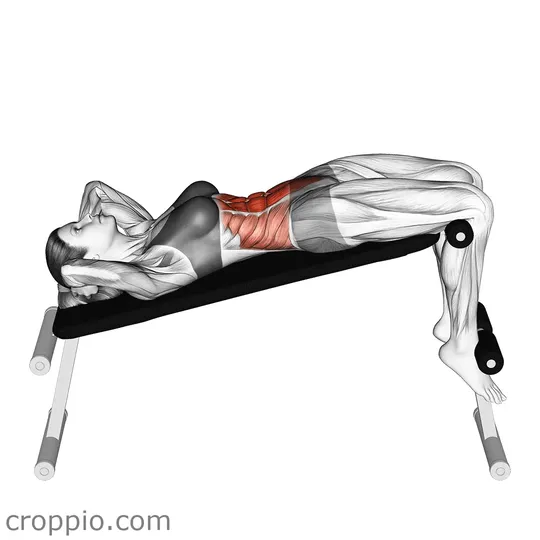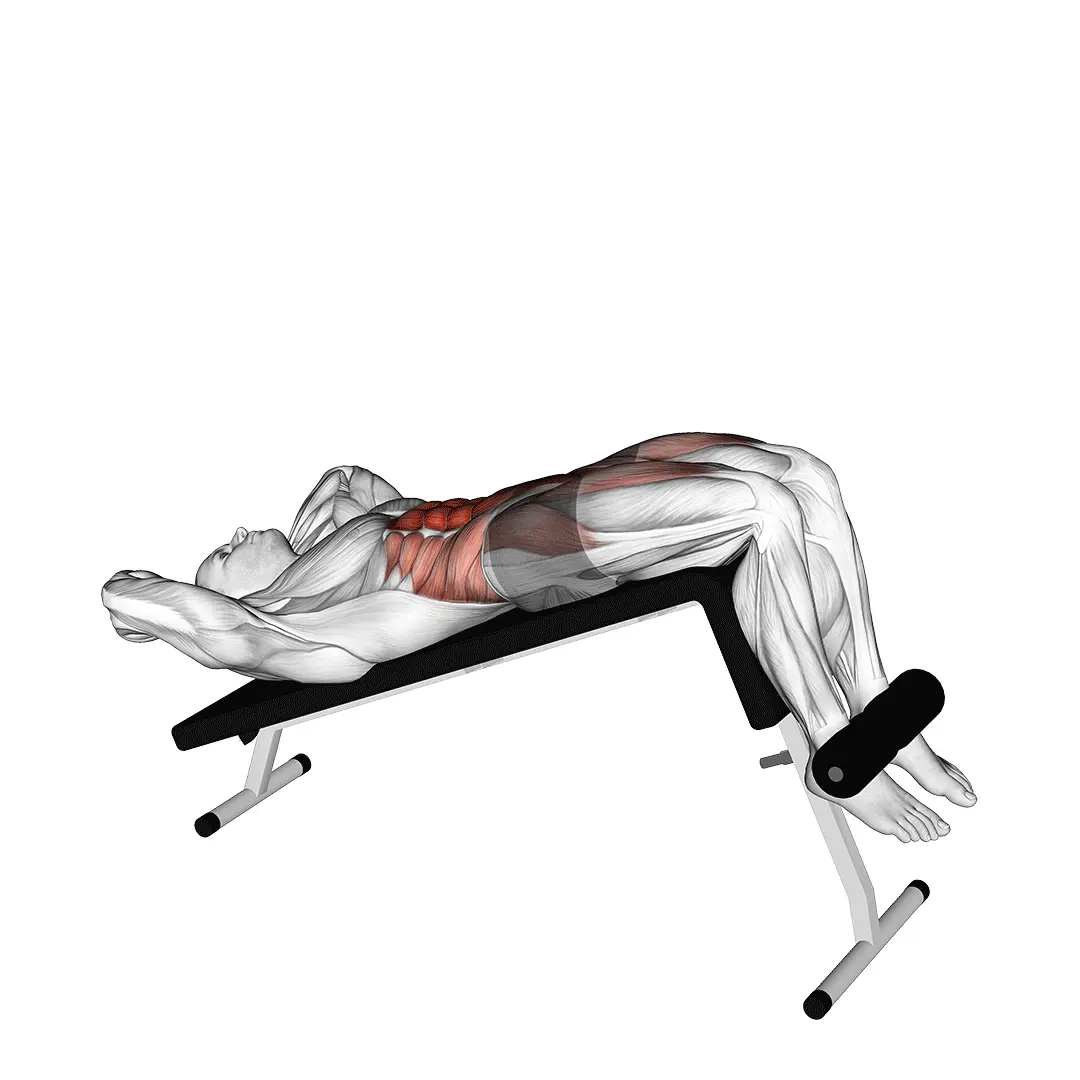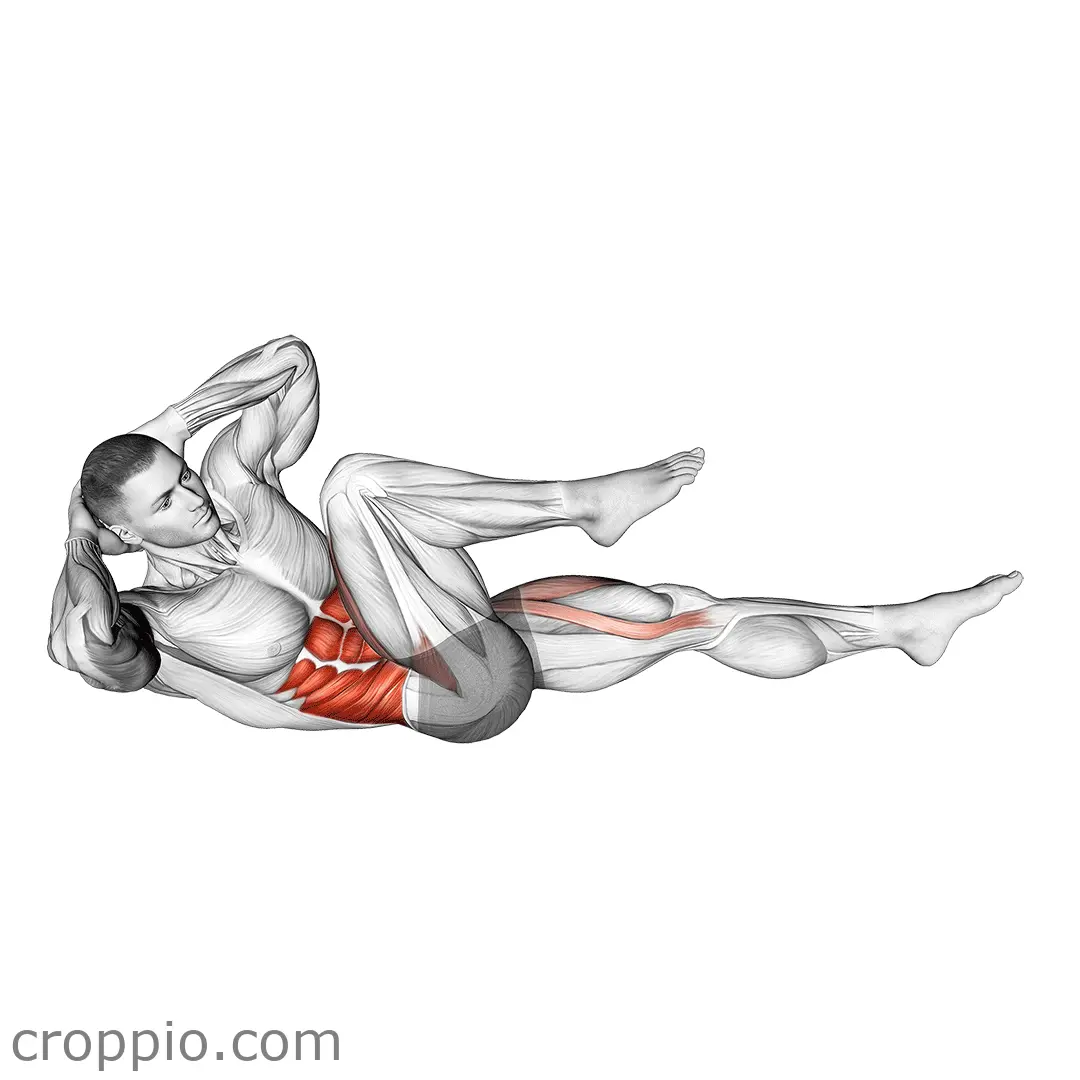Decline Crunch

Muscles Involved
The decline crunch is a fantastic exercise targeting the rectus abdominis, the muscle primarily responsible for flexing the spine. By placing the body in a declined position, this exercise increases the intensity of abdominal contractions. Additionally, the obliques, which are engaged during the twisting phase of the move, benefit from this exercise, enhancing overall core stability. Secondary muscles involved include the hip flexors and stabilizers, such as the transversus abdominis, which help maintain core integrity and proper posture throughout the execution.
Top Mistakes
- Not using a full range of motion: Failing to fully elevate the shoulders off the ground reduces the effectiveness of the exercise and may lead to minimal muscle engagement.
- Using momentum: Swinging the hips or relying on jerky movements can strain the back and reduce the effectiveness of the crunch.
- Overextending the neck: Pulling on the head or straining the neck during the exercise can lead to discomfort and injury.
Execution Tips
- Begin by positioning yourself on a decline bench, securing your feet to stabilize your body.
- Lie back, placing your hands lightly behind your head or crossed over your chest to avoid pulling on your neck.
- Engage your core before initiating the movement, and focus on contracting the abdominal muscles to lift your shoulders off the bench.
- Keep your lower back pressed against the bench throughout the movement to protect your spine.
- Exhale as you crunch upwards and inhale as you lower back down, ensuring a controlled motion.
Workouts
The decline crunch can be incorporated into a comprehensive abdominal routine or a full-body workout. Aim for 3–4 sets of 10–15 repetitions for beginners, increasing the volume as your strength improves. To create a balanced core workout, pair the decline crunch with complementary exercises such as planks, reverse crunches, and Russian twists; this combination offers diversity and engages all areas of the abdominal region.
Conclusion
Incorporating the decline crunch into your fitness routine can significantly enhance abdominal strength and definition. By actively engaging the core and focusing on proper form, this exercise promotes not only a toned midsection but also improved overall stability and functional strength. When executed correctly, the decline crunch can be a powerful tool in achieving fitness goals, whether you are aiming for aesthetic results or functional performance enhancements.



